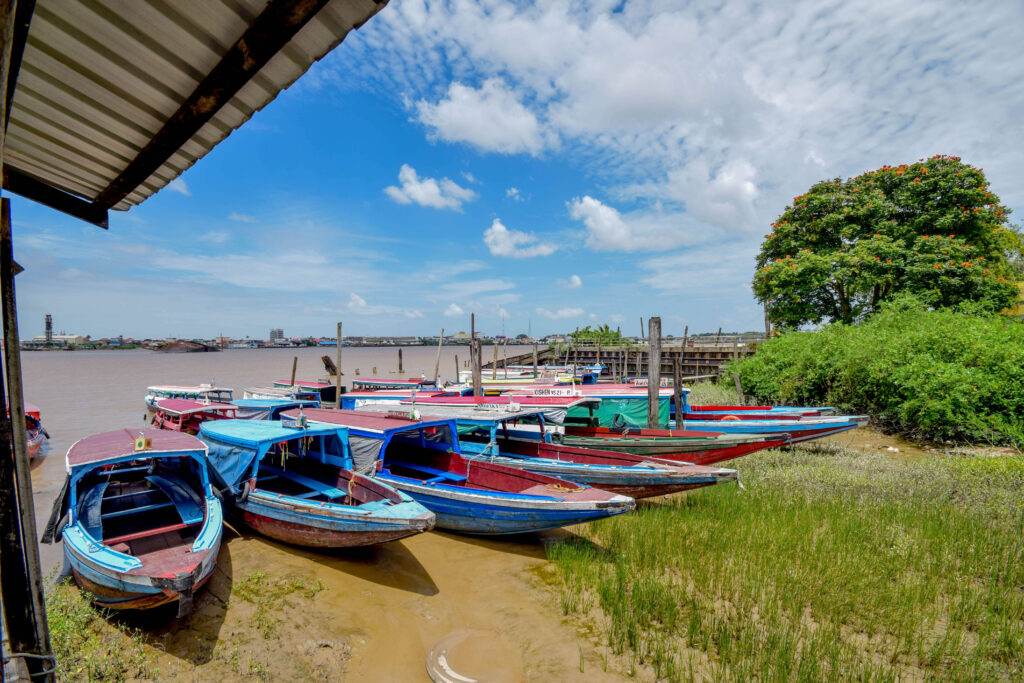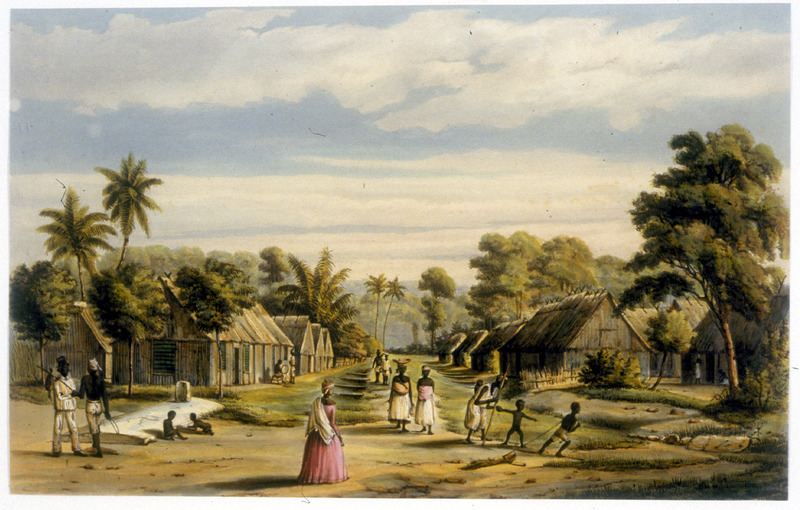Suriname, a hidden gem nestled on the northeastern coast of South America, is a country brimming with rich history and natural beauty. One of its most intriguing regions is Commewijne, a district renowned for its plantations that have stood the test of time. These plantations, remnants of Suriname’s colonial past, offer a captivating glimpse into the country’s complex past, where sugar, coffee, and cacao reigned supreme. Each plantation tells a unique story, with whispers of thrived industries and the tales of those who toiled on the land. Embark on a journey through time and immerse yourself in the history and culture of Suriname as you explore the plantations of Commewijne.
Historical Background
Arrival of the Dutch
The history of Commewijne can be traced back to the arrival of the Dutch in Suriname. In the 17th century, the Dutch established plantations along the Commewijne River, primarily for the cultivation of sugarcane and other cash crops. These plantations relied heavily on enslaved labor from Africa, leading to the establishment of a thriving slave trade.
The Rise and Fall of the Plantations
During the peak of the plantation era in the 18th and 19th centuries, Commewijne was a prosperous region with numerous plantations producing sugar, coffee, cocoa, and cotton. However, the harsh working conditions and brutal treatment of enslaved people eventually led to resistance, rebellions, and the abolishment of slavery in 1863.
After the abolishment of slavery, many plantations in Commewijne struggled to survive. Without the free labor force, the economic viability of the plantations declined, and they eventually fell into disrepair. Today, these plantations serve as reminders of Suriname’s colonial past and the legacy of slavery.
The Legacy of Slavery
The legacy of slavery is a significant part of Commewijne’s history. The plantations that once relied on enslaved labor now serve as reminders of the dark past. The descendants of enslaved people have preserved their African cultural heritage, and their stories have become an integral part of Surinamese history and identity. Understanding this legacy is essential for visitors to Commewijne, as it provides crucial context for exploring the region’s plantations.
Geographical Overview
Location and Size of Commewijne
Commewijne is located in northern Suriname, bordering the Atlantic Ocean to the north. It is situated east of the capital city, Paramaribo, and covers an area of approximately 2,353 square kilometers. The district is primarily characterized by its riverine landscapes, with the Commewijne River flowing through its center.
Natural Surroundings and Landscapes
Commewijne’s natural surroundings offer a diverse range of landscapes, from dense forests to expansive savannahs and picturesque coastal areas. The district is known for its rich biodiversity, with numerous species of birds, mammals, and reptiles calling the region home.
The Commewijne River, with its calm waters and lush vegetation along its banks, provides a serene and beautiful setting for exploring the plantations and immersing oneself in nature. The district is also home to nature reserves such as the Bigi Pan Wetland and Galibi Nature Reserve, offering opportunities for wildlife spotting and eco-tourism activities.
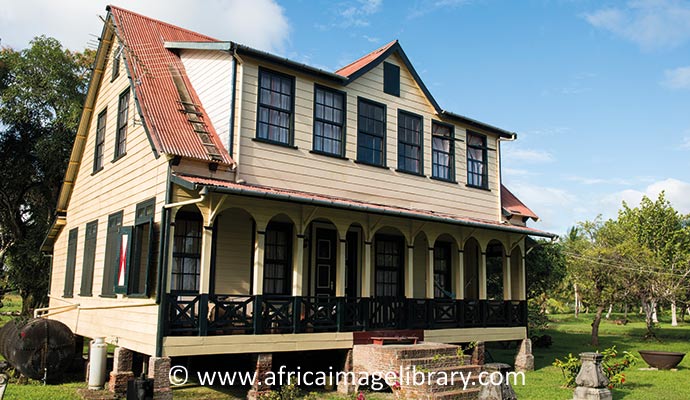
Must-Visit Plantations
Alkmaar Plantation
The Alkmaar Plantation is one of the must-visit plantations in Commewijne. Established in the 18th century, this former sugar plantation offers visitors a glimpse into the region’s colonial past. The plantation features well-preserved remnants of its sugar factory, including the impressive chimney and machinery.
Visitors to Alkmaar Plantation can take guided tours to learn about the history of the plantation and its significance in Suriname’s colonial era. The estate is also home to various species of birds and offers nature walks through its surrounding grounds. Additionally, the plantation has a restaurant that serves local dishes, providing visitors with an authentic culinary experience.
Mariënburg Plantation
Mariënburg Plantation holds significant historical importance in Commewijne. This former sugar plantation was one of the largest and most productive in Suriname during the plantation era. Today, remnants of the plantation’s infrastructure, including the plantation house, factory buildings, and railway tracks, can still be seen.
Visitors can explore the plantation’s grounds and learn about the contribution of Mariënburg to Suriname’s sugar industry. The plantation also offers opportunities for birdwatching, hiking, and boat tours along the adjacent Suriname River. It is a truly fascinating destination for history enthusiasts and nature lovers alike.
Lust en Rust Plantation
Lust en Rust Plantation is another must-visit destination in Commewijne. This former coffee and cacao plantation provides visitors with a cultural and historical experience. Its well-preserved plantation house showcases the grandeur of the colonial era.
The plantation’s beautiful gardens offer a tranquil setting for visitors to relax and enjoy the natural surroundings. Guided tours are available, providing insight into the plantation’s history, its role in the slave trade, and the cultivation of coffee and cacao. Visitors can also sample locally grown coffee and cacao products, immersing themselves in the flavors of Suriname.
Alkmaar Plantation
History and Origins
Alkmaar Plantation was established in the 18th century and was primarily focused on sugar production. The plantation’s name is believed to be derived from the Dutch city of Alkmaar, reflecting the influence of the Dutch in Suriname during that time.
Enslaved Africans were brought to Alkmaar Plantation to work on the sugar fields and in the sugar factory. The labor-intensive nature of sugar production required a large workforce, and the plantation flourished during its peak years.
Tourist Attractions and Activities
Today, Alkmaar Plantation offers various tourist attractions and activities for visitors. The remnants of the plantation’s sugar factory, including the towering chimney and rusted machinery, serve as a stark reminder of its past.
Guided tours of the plantation allow visitors to explore the grounds and learn about the plantation’s history, the lives of the enslaved people who worked there, and the production processes of sugar. Nature walks are also available, allowing visitors to appreciate the diverse flora and fauna that thrive in the area.
Cultural Significance
Alkmaar Plantation holds cultural significance as a historical site in Suriname. It provides a tangible link to the region’s colonial past and the legacy of slavery. By visiting the plantation, understanding the historical context, and engaging with the local community, visitors can gain a deeper appreciation of Suriname’s cultural heritage and the impact of colonialism on the country.
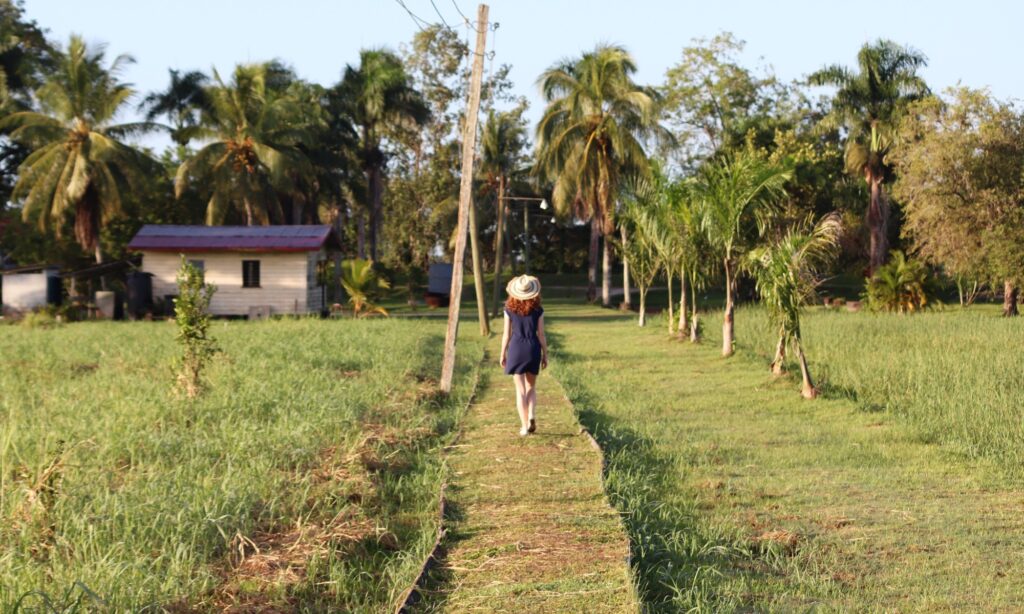
Mariënburg Plantation
Historical Significance
Mariënburg Plantation played a crucial role in Suriname’s sugar industry during the plantation era. Established in the 18th century, it became one of the largest and most prosperous plantations in the region. The plantation’s strategic location along the Suriname River facilitated the transportation of sugar and other goods to the capital city of Paramaribo.
The remnants of Mariënburg’s infrastructure, including the plantation house, factory buildings, and railway tracks, offer a glimpse into the plantation’s historical significance. The plantation represents the economic prosperity of the sugar industry and the exploitative labor practices that were prevalent during that time.
Sightseeing and Activities
Visiting Mariënburg Plantation provides visitors with the opportunity to explore the plantation’s grounds and learn about its history. Guided tours offer insights into the daily lives of the enslaved people who worked on the plantation and the cultivation and processing of sugar.
Boat tours along the Suriname River allow visitors to appreciate the stunning natural surroundings and observe wildlife. Hiking trails also provide opportunities to explore the nearby forests and experience the beauty of the region’s flora and fauna.
Lust en Rust Plantation
Overview and Background
Lust en Rust Plantation is a historic estate that was primarily focused on the cultivation of coffee and cacao. It was established in the 18th century and played a significant role in the region’s agricultural history. The plantation’s name translates to “Pleasure and Rest,” reflecting the relaxing and serene atmosphere it offers to visitors.
Highlights and Things to Do
Visitors to Lust en Rust Plantation can explore the grand plantation house, which showcases the architectural beauty of the colonial era. The surrounding gardens provide a peaceful setting for visitors to relax and appreciate the natural beauty of the estate.
Guided tours offer insights into the plantation’s history, including its involvement in the slave trade and the cultivation of coffee and cacao. Visitors can also sample locally grown coffee and cacao products, immersing themselves in the flavors and aromas of Suriname. The plantation’s tranquil ambiance and rich historical significance make it a must-visit destination in Commewijne.
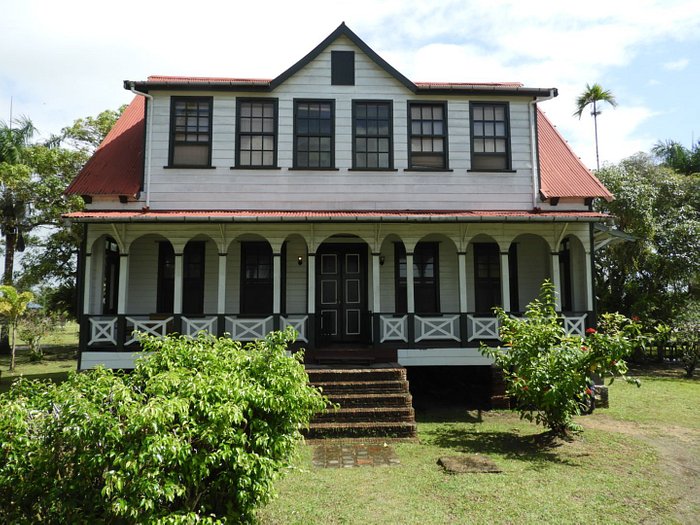
Guided Tours and Local Experiences
Professional Tour Operators
Several professional tour operators in Commewijne offer guided tours of the plantations and surrounding areas. These tour operators provide knowledgeable guides who can provide historical context and insights into the plantation era and the legacy of slavery.
By choosing a professional tour operator, visitors can ensure a comprehensive and informative experience. These tours often include transportation, guided tours of the plantations, and the opportunity to engage with the local community.
Community-Based Tourism Initiatives
Commewijne is home to various community-based tourism initiatives that offer authentic and immersive experiences for visitors. These initiatives provide opportunities to engage with local communities, learn about their traditions and way of life, and contribute to the local economy.
Visitors can participate in activities such as traditional cooking classes, craft workshops, and cultural performances. These initiatives foster cultural exchange and provide a deeper understanding of Suriname’s diverse ethnic makeup and traditions.
Authentic Experiences
To truly experience the plantations of Commewijne, it is recommended to engage in authentic experiences. This can include staying in local guesthouses or homestays, where visitors can interact with local hosts and gain a firsthand understanding of their daily lives.
Engaging with the local community, participating in traditional ceremonies or celebrations, and trying local dishes can provide a more authentic and meaningful experience. These interactions allow visitors to connect on a deeper level with the local culture, history, and heritage.
Sustainable Tourism Practices
Preservation of Historical and Cultural Heritage
Preserving the historical and cultural heritage of Commewijne’s plantations is essential for sustainable tourism. Efforts should be made to maintain and restore the structures and artifacts that represent the region’s colonial past and the legacy of slavery.
Collaboration between government bodies, local communities, and tourism stakeholders is crucial in implementing sustainable preservation practices. This includes establishing guidelines for the conservation of historical sites, promoting responsible tourism, and ensuring the inclusion and participation of local communities in decision-making processes.
Conservation of Natural Resources
Commewijne’s natural surroundings and biodiversity are valuable assets that must be protected. Sustainable tourism practices should prioritize the conservation of natural resources, including forests, rivers, and wildlife.
Visitors can contribute to conservation efforts by minimizing their ecological footprint, such as following designated trails, refraining from littering, and respecting wildlife habitats. Support for local eco-tourism initiatives and organizations working towards environmental conservation can also make a positive impact in preserving the natural beauty of the region.
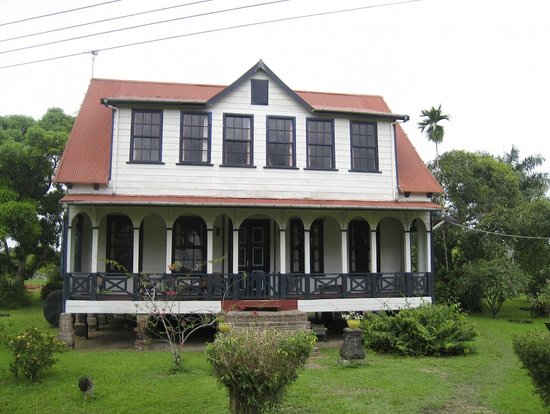
Getting to Commewijne
From Paramaribo
Commewijne is conveniently located east of Paramaribo, making it easily accessible for visitors. The most common way to reach Commewijne from Paramaribo is by crossing the Suriname River via the Jules Wijdenbosch Bridge. It is approximately a 30-minute drive from Paramaribo to Commewijne.
Public Transportation Options
Public transportation options to Commewijne are available for those who prefer not to drive. Buses and minibusses regularly travel between Paramaribo and Commewijne, providing a cost-effective and convenient means of transportation.
Car Rental Services
For those who prefer to explore at their own pace, car rental services are available in Paramaribo. Renting a car allows visitors the flexibility to visit multiple plantations and other attractions in Commewijne. It is recommended to check for local car rental companies and inquire about the necessary permits and driving regulations in Suriname.
Accommodation and Dining
Hotels and Guesthouses
Commewijne offers a range of accommodation options, including hotels and guesthouses. These establishments provide visitors with comfortable and convenient places to stay while exploring the plantations and surrounding areas.
Guesthouses offer a more intimate and authentic experience, often run by local families or communities. Staying in a guesthouse allows visitors to interact with locals, learn about their traditions, and enjoy homemade meals using local ingredients.
Local Cuisine and Restaurants
Exploring Commewijne would not be complete without tasting the local cuisine. Surinamese cuisine is a fusion of various cultures, including African, Indian, Indonesian, and Dutch influences. Visitors can indulge in dishes such as roti, pom, and moksi meti, which showcase the diverse flavors and culinary traditions of the country.
Local restaurants in Commewijne serve a mix of traditional Surinamese dishes and international cuisine. Here, visitors can savor authentic Surinamese flavors and explore the region’s culinary heritage.
In conclusion, exploring the plantations of Commewijne in Suriname provides a fascinating journey into the region’s history, culture, and natural beauty. The historical background, geographical overview, and must-visit plantations offer visitors a comprehensive understanding of the district’s significance. Engaging in guided tours and local experiences, practicing sustainable tourism, and immersing in the local cuisine and accommodations enhance the overall experience. Commewijne’s plantations serve as a reminder of the struggles and triumphs of the past, highlighting the importance of acknowledging and preserving this complex heritage.
